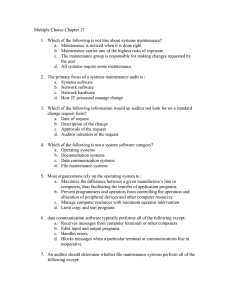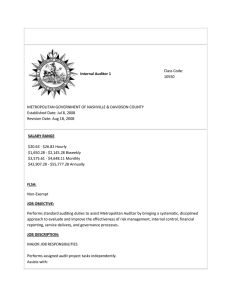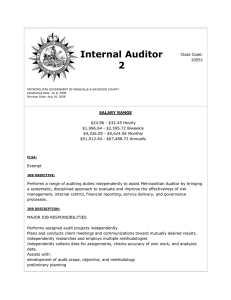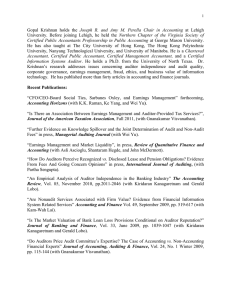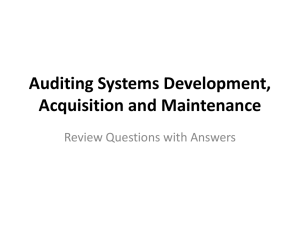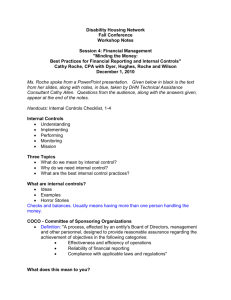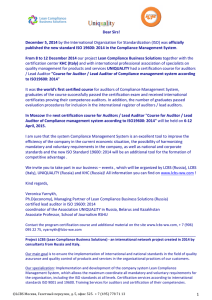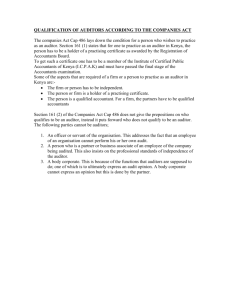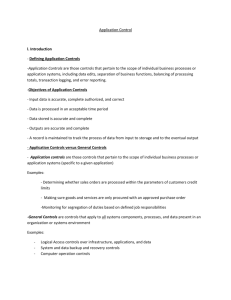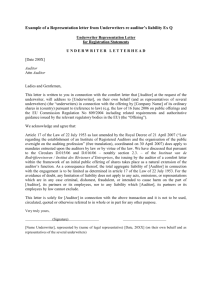The Ten Steps of the Texas State Auditor`s Performance Measures
advertisement
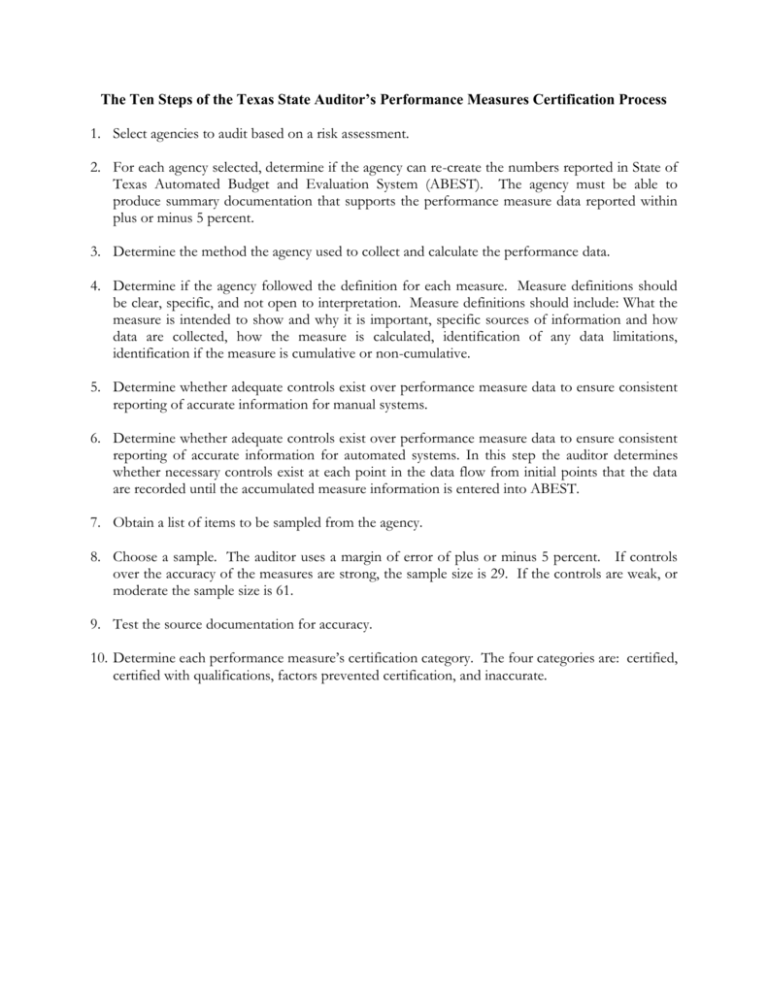
The Ten Steps of the Texas State Auditor’s Performance Measures Certification Process 1. Select agencies to audit based on a risk assessment. 2. For each agency selected, determine if the agency can re-create the numbers reported in State of Texas Automated Budget and Evaluation System (ABEST). The agency must be able to produce summary documentation that supports the performance measure data reported within plus or minus 5 percent. 3. Determine the method the agency used to collect and calculate the performance data. 4. Determine if the agency followed the definition for each measure. Measure definitions should be clear, specific, and not open to interpretation. Measure definitions should include: What the measure is intended to show and why it is important, specific sources of information and how data are collected, how the measure is calculated, identification of any data limitations, identification if the measure is cumulative or non-cumulative. 5. Determine whether adequate controls exist over performance measure data to ensure consistent reporting of accurate information for manual systems. 6. Determine whether adequate controls exist over performance measure data to ensure consistent reporting of accurate information for automated systems. In this step the auditor determines whether necessary controls exist at each point in the data flow from initial points that the data are recorded until the accumulated measure information is entered into ABEST. 7. Obtain a list of items to be sampled from the agency. 8. Choose a sample. The auditor uses a margin of error of plus or minus 5 percent. If controls over the accuracy of the measures are strong, the sample size is 29. If the controls are weak, or moderate the sample size is 61. 9. Test the source documentation for accuracy. 10. Determine each performance measure’s certification category. The four categories are: certified, certified with qualifications, factors prevented certification, and inaccurate.
